Montana in 30 Years: Wildflowers
Interview with Norman Weeden (Professor of Plant Genetics | Department of Plant Sciences and Plant Pathology | Montana State University)
Are wildflowers important in some way besides their obvious aesthetic appeal?
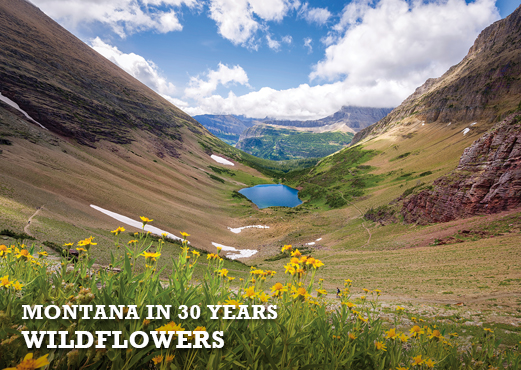
The flower represents a critical step in the life cycle of a flowering plant. It is in the flower that the egg and the pollen are produced, fertilization occurs, and the next generation is formed as one or more seeds. Many plants require pollen from other plants of the same species. The colorful flowers that we enjoy in the field are also attracting the attention of animal pollinators, such as birds and bees. Many pollinators are keyed into specific aspects of flowers (hummingbirds like red flowers with a tubular shape), and a plant species usually produces only one very consistent flower type. A pollinator that prefers this flower type can be very efficient at transferring pollen from one plant to another. Color and shape are not the only characters a plant uses to attract pollinators. Food (pollen or nectaries) or the promise of food (fragrance or mimicry) is often used as an enticement. Indeed, very little of what we appreciate about wildflowers is there by accident.
We’ve been reading that the wildflower bloom in the mountains lasts much longer than in the past. Isn’t that a good thing?
It depends what you mean by “good”. The main reason for a plant to flower is to produce seed. A native species of plant is very good at producing seed in that environment, probably better than many similar species that could be competitors. Now, if the environment changes, say by a slight warming that extends the flowering season in the mountains, some of the plant species present may not be able to take advantage of the longer season and, thus, may be replaced by species from the lower elevations or to the south that are already adapted to the longer season. If you like seeing green plants and perhaps flowers for a longer period, then the longer season is good, but it you prefer finding those species that thrive in the short season characteristic of the higher elevations or latitudes, then a warming trend is not good.
When it comes to climate change what is the greater threat to wildflower populations — moisture or temperature?
Plants tend to be much more responsive to changes in moisture than in temperature. Perhaps this generalization stems from the fact that in most terrestrial habitats a plant is always watching its water loss and working to conserve water. This same plant can function reasonably well over a wide range of temperatures. In most habitats in Montana, the availability of water is a significant factor for determining what plants will grow. For example, the monthly average temperatures for Thompson Falls and Great Falls are very similar, whereas the average precipitation is 20.2” and 14.7”, respectively. The native vegetation of the two locations is very different, being coniferous forest around Thompson Falls and prairie around Great Falls. Whatever the reason, in Montana a change in the average precipitation of an area by an inch or so will cause a much greater shift in the vegetation than changing the average annual temperature by a degree or two.
Can you describe what the mountain wildflower scape might look like to a hiker in 2046?
The safest answer to this question is “much the same as it does today.” There are many variables that could affect this habitat, and I would more likely be wrong if I chose any other answer.
However, there are some clear trends that will have some impacts. The most obvious of these is that there are more people moving into the western part of the state and more people using the backcountry for recreation. The greater access and heavier use of the mountains means greater soil compaction and a shift to species that do better in disturbed habitats (such as dandelions and thistle).
If the average temperature does increase, the big question is whether there will be an increase or decrease in annual precipitation. If rainfall increases, the forests may spread and many herbaceous and woody species to the south and west of the state may find acceptable habitats in Montana.
Presumably, we will still have a dry season, and depending on the extent of this season, fires may become more intense due to the greater biomass. If annual precipitation stays the same or diminishes as the climate warms, many of the mountain wildflowers will be replaced by more drought-tolerant species, particularly grasses but also sagebrush and other composites prevalent in the drier regions of the Great Basin.
What place do wildflowers have in the ecosystem, and how would the ecosystem and wildlife be impacted by radical change or loss of indigenous plants and wildflowers?
Wildflowers, like other plants, serve the ecological role of a primary producer, converting energy from sunlight to carbohydrates and other organic compounds. Many wildflowers are direct food sources for insects, birds, and mammals living in or passing through the mountains. In addition, wildflowers are typically herbaceous annuals or perennials and as such perform a critical role in forming a ground cover as the snow melts and contributing to the development of the soil. Certain wildflowers can also play more specialized ecological roles. Perhaps the best example is the nitrogen fixing capability of legumes (members of the pea family). Lupines, clovers, and other members of this family obtain much of the nitrogen they need from nitrogen gas in the atmosphere. Most other plants cannot obtain their nitrogen from the atmosphere but thrive on the soil nitrogen (nitrates) the legumes leave behind. Thus, species in the pea family are common members of the alpine plant community where soils are young and low in nitrates.
Species in every ecosystem have complex interactions, so any major change in the wildflowers present will also alter what animals are present (particularly birds and insects). The change may also modify the water purifying ability of the habitat, as well as erosion potential and soil-building capability, but these effects are harder to predict.
What innovative work or studies are underway which offer promise for sustaining the Montana mountain ecosystem and, particularly, wildflowers? Is there anyway the average citizen can help?
This is a very broad question that I really can’t answer adequately in the space available. There are many ongoing studies that are directly or indirectly addressing this issue. Most studies have a narrow focus, addressing certain species or habitats (e.g. a rare orchid or an alpine meadow). For instance, white bark pine is difficult to reestablish by direct seeding. Recent research has shown that a mycorrhizal fungus is critical for the young roots to function adequately. Adding this fungus to the potting mix when planting seeds in a greenhouse greatly increases seedling vigor and eventual success in replanting the seedlings in the field.
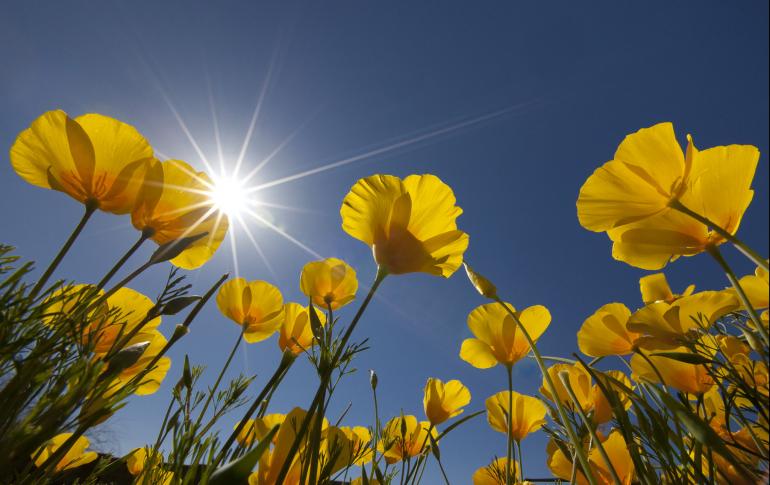
Probably the easiest way for the average citizen to get involved in such efforts is to contact the local chapter of the Montana Native Plant Society (www.mtnativeplants.org). The US Forest Service also has projects for which they need volunteers. Finally, when people go into the mountains for whatever purpose they should realize that most of the organisms they encounter are fighting to survive, and it will not take much disturbance to cause their demise. Tread lightly!


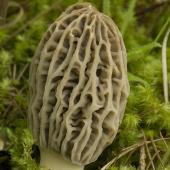


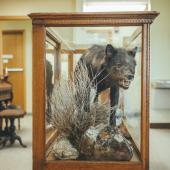



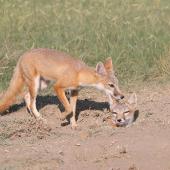
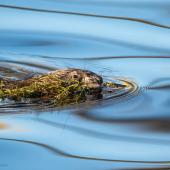

Leave a Comment Here